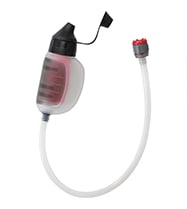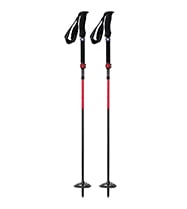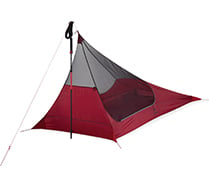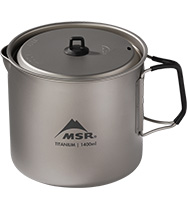Mountain Running in the Sierra Nevada
One of the best parts of mountain running is when you get to walk. I’m not calling mountain running a gentle stroll, but generally, you’re not full-on, maxed-out sprinting hour after hour up an enormous rock pile. The running part is great, but the main draw is that rock pile and the ones around it. Just being, and moving, in the mountains. Starting from the smell of sage and climbing into solitude with the sounds of rushing water, birdsong, and your own feet finding rhythms on the ground. Often, if you are walking, you are someplace spectacular: a steep forest trail, a technical ridge, or on the way to a lonely summit where the air is thin.
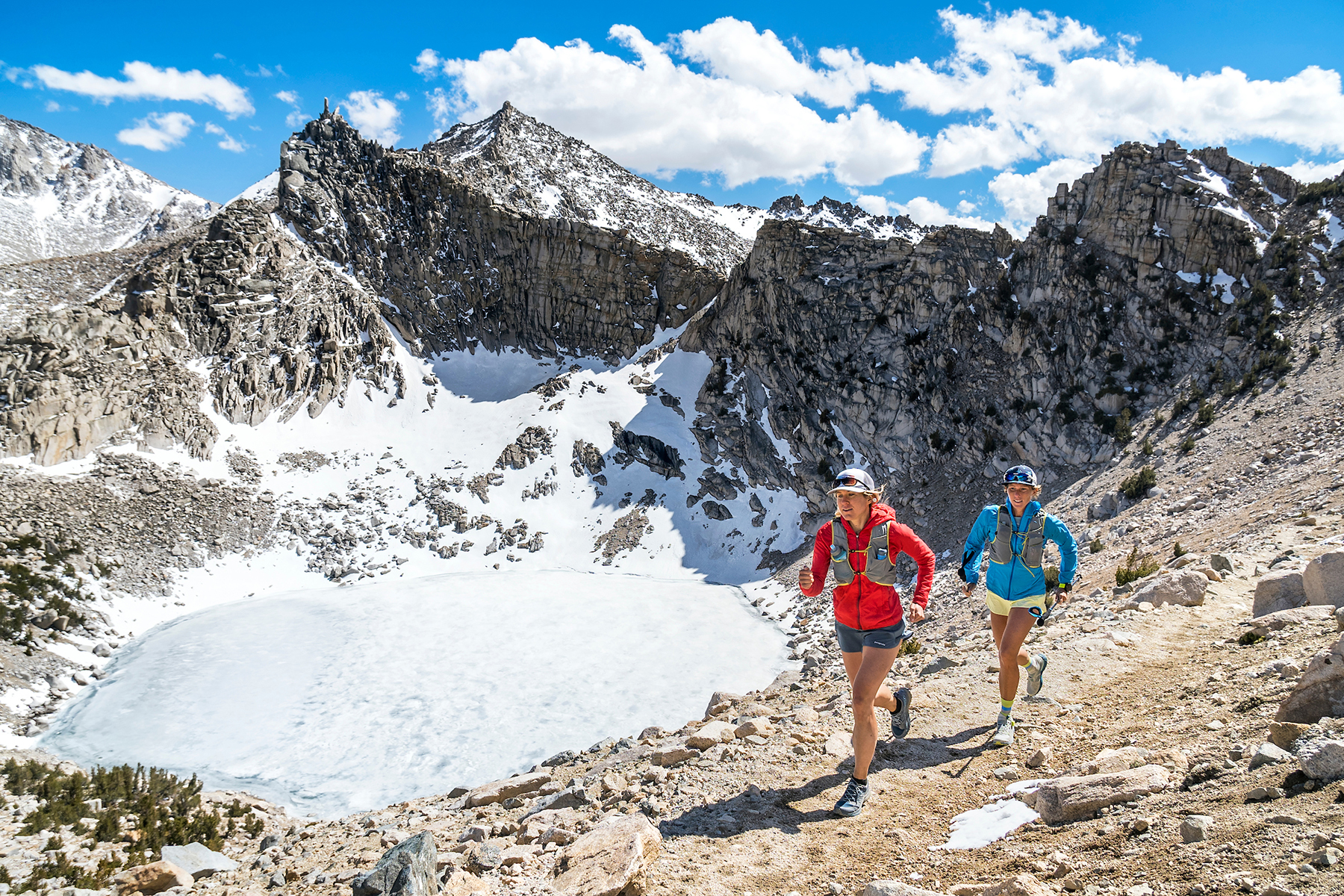
As a mountain runner coming from the Alps, I’ve been adapting to the dry, rugged terrain of California’s Eastern Sierra while searching for the best trails to produce a guidebook.
The Sierra Nevada range is challenging and gorgeous terrain for mountain running. The range is rough and remote. Massive and high. Many trails stay above 10,000 feet, aiming for 13- and 14,000-foot summits that require cross-country travel over large talus fields and light scrambling to reach the tops. Approaching this combination of high elevation, long-distance and alpine terrain as a “mountain runner” means you “run” the parts you can. In mountain running, running often means hopping, bouncing, scrambling, definitely walking and even some trudging.
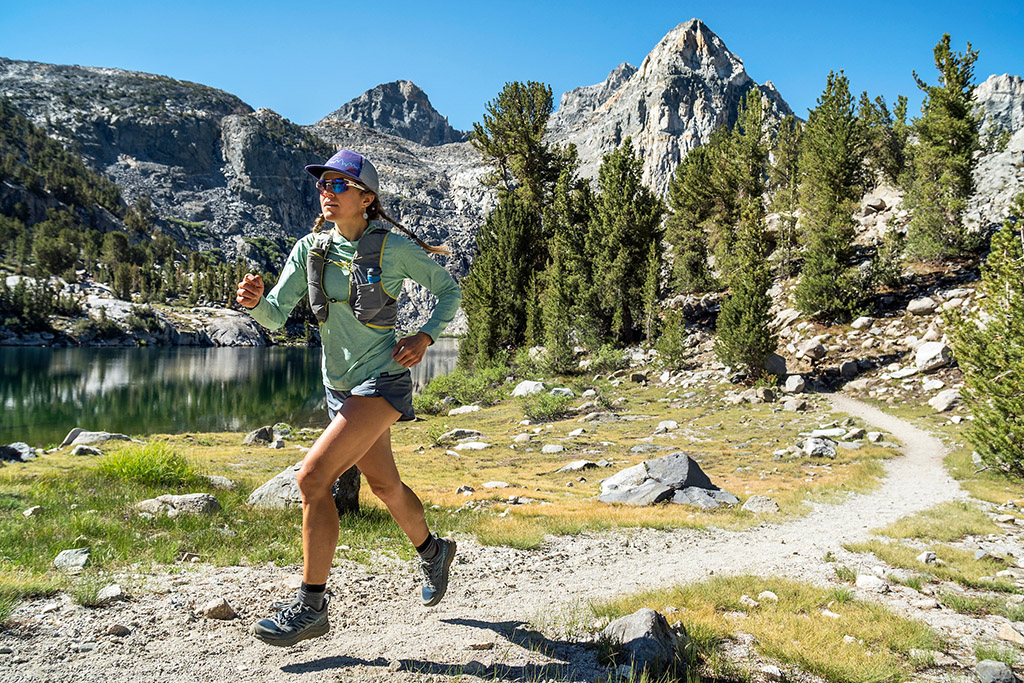
How to Mountain Run
The Running Part
While mountain running involves a combination of skills, knowledge, and experience, being a mountain runner does require the ability to do some actual running. That’s a good place to start. Before striking off for high peaks, invest some time running flatter and smoother, or better yet, rolling trails with some rocks and roots. A solid base of miles (tapping into an LSD—long, slow, distance—mentality) is beneficial to pull you through a long mountain day. There’s a freedom in mountain running that leaves monotonous mechanics and pace on the road. The terrain, and so your movement, is continually changing – up, down, sideways over rocks, adapting speed and stride to handle what’s underfoot.
Uphill
Our goals are often up high: passes, peaks, a perfect lunch spot before the turnaround. And getting there efficiently. If you’re headed up a huge climb, or several in one day, settle into a steady rhythm of power hiking while ticking off the vertical. When walking versus running uphill, the difference in your heart rate is huge, even though the speed can be about the same.
Going up teaches you the importance of going light. No one wants to haul extra weight uphill, and when it comes time to go down, you’ll also appreciate the decreased impact on your knees.
Downhill
Once you reach the top, because mountain runs tend to go up first, it’s time to run down. Descending quickly on mountain trails takes a fair amount of focus and skill. While practice never makes perfect, firing downhill is fun to practice.
Unless the trail is somewhat smooth, running downhill can look more like bouncing and bracing than running, especially as the trail gets steeper and more technical.
To move efficiently on steep downhills: take shorter, quicker steps, keep a springiness in your knees, accept speed and use your arms like wings for balance, steering and fun.
Scrambling and Scree-ing
Besides running and hiking, a few other techniques can be involved in mountain running. It’s important to be comfortable moving on steep terrain and ridges, using your hands for balance and potentially easy climbing. It’s a good idea to pay attention to the terrain as you go up to be sure you’ll be comfortable coming back down it. Scree-ing is a fun technique for coming down steep gullies with small, loose rock, gravel or snow by sliding, as controlled as possible, on your heels.
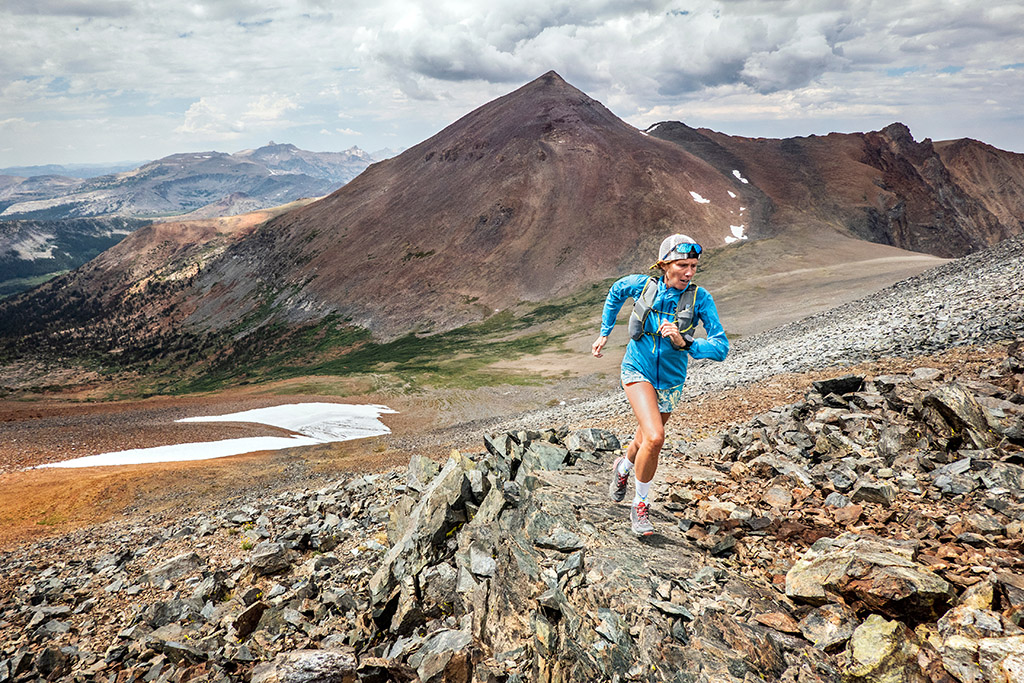
Mountain Running Gear
Shoes
Keeping your feet happy is imperative to having a good mountain run. Soles need to be appropriate for the terrain: muddy, rocky, talus fields, snowy, or scrambling. They need to handle variety as well as being comfortable. Sticky rubber, good lugs and a rock plate are useful in the Sierra, as well as gaiters to help keep it all out of your shoes.
Clothing Layers
You don’t need much, but it’s always better to have an extra layer if you start moving more slowly or in case of weather changes. If it is really warm, as it tends to be in the Sierra, I’ll only take a windshell to pull over a technical tank or tee. But if it’s potentially cooler, I go with a light, long sleeve merino shirt and even a packable, puffy jacket. Wind at high altitude can be frigid even on hot days, and routes can take longer than anticipated.
Besides wearing shorts and a tee, I typically carry these Sierra summer clothing options (take what’s necessary for the day’s conditions):
- Light-Mid weight long sleeve layer
- Wind shirt and/or rain jacket
- Buff
- Gloves
- Hat and sunglasses
Poles
Poles shift a little effort from your quads to your arms. A little extra help with each step up. For steep descents, poles help stabilize and absorb some of the impact. For crossing or descending snow or talus, poles can help with balance and moving efficiently.
Packs
Pack volume ranges from 1-liter vests to 15-liter packs. Anything more than that and you might be out for a hike. There are vests for short runs that hold little more than a flask and a windshell, mid-size for longer runs with some temperature changes, and big packs for going higher and/or longer and carrying more gear.
Packs should fit snugly and keep everything from bouncing and swaying. Chest pockets keep essentials like water, phone, some food, buff, gloves, all within reach without stopping. Warmer layers, bigger gear and bigger sandwiches ride in the back.
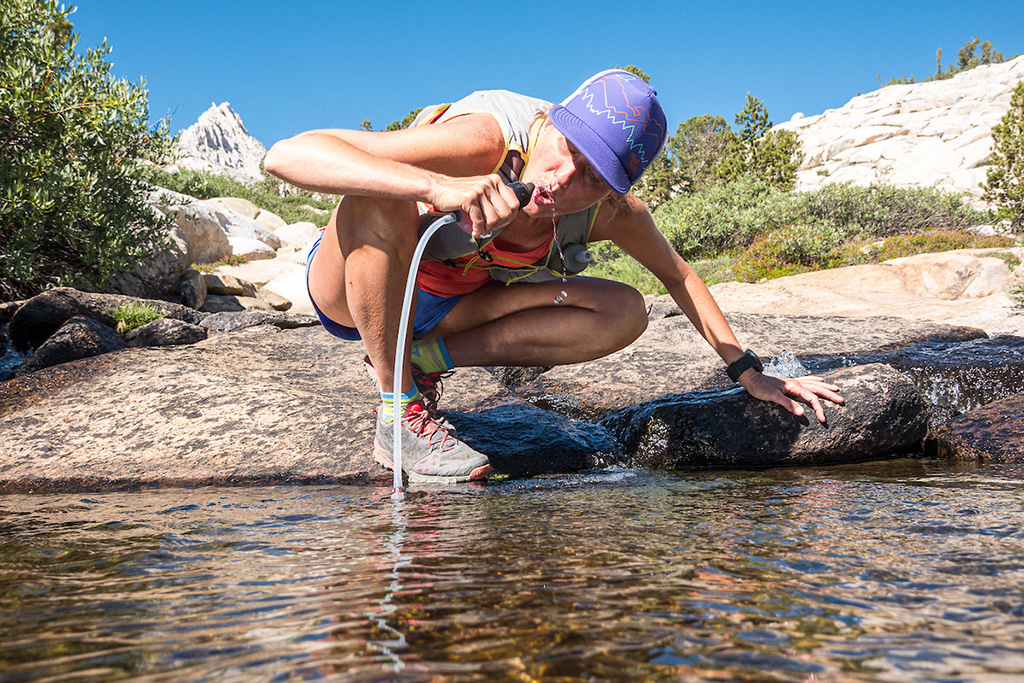
Nutrition on the Run
Fuel makes a huge difference in how you feel, your performance and your recovery. It’s a good idea to eat something every 1-2 hours during sustained effort. Real food works best for me like that sandwich taking up space in my pack and I prefer salty to sweet, but bars and gels might work for others.
There isn’t often a need for a water bladder when you carry a filter like the MSR TrailShot. I tuck just one or two 500ml soft flasks in my pack pockets to carry enough to drink between lakes and streams for filtering.
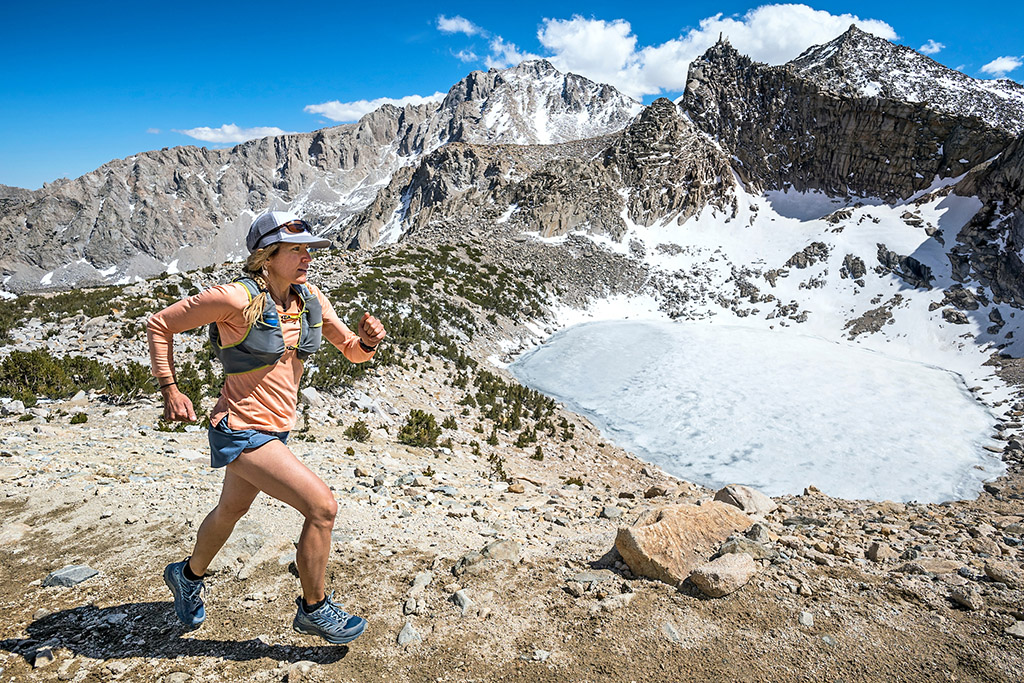
Sierra Specifics
Some specific concerns to mountain running in the Sierra are the weather, wildlife, terrain and accessibility.
- Heat, thunderstorms, snowfall, fires and the availability of water should all be considered when planning a mountain run in the Sierra. Be ready for anything.
- Trailheads often provide bear boxes to store food that shouldn’t be left in vehicles. Remember you are heading into the territory of bears, rattlesnakes, and if you are unlucky, mosquitoes.
- Many runs in the Sierra start in low sagebrush or pine forest on marked and maintained trails. As you travel higher into rockier, more technical alpine terrain, it may require cross-country navigation. Be sure to have good maps and navigation skills.
- To reach the top of a peak or complete a running loop, you often need to cover long distances while staying at rather high elevations. In much of the Sierra, you are out of reach of cell coverage so you need to be self-sufficient.
Text: Kim Strom
Photos: Dan Patitucci
Related Posts:

